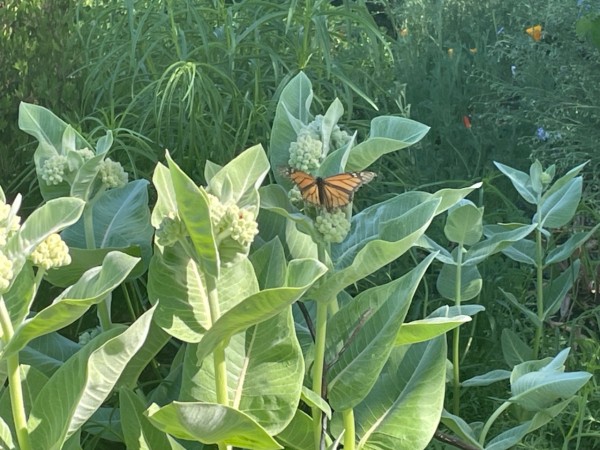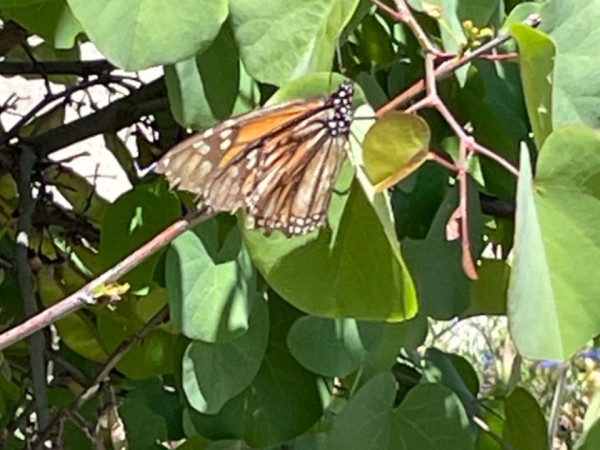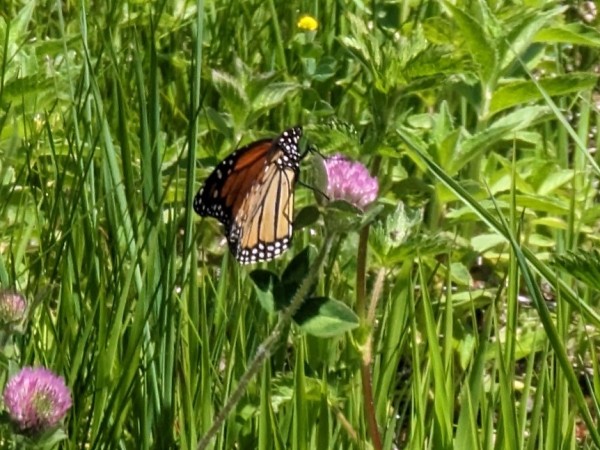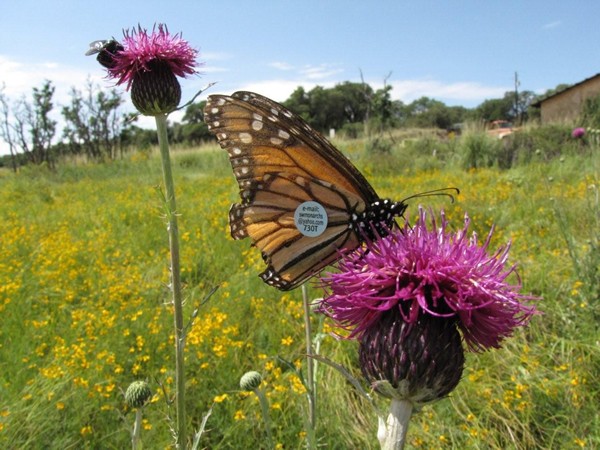Letter From Gail Morris: Western Monarch Spring 2023 Report #11
Western Monarchs Update
New sightings were few as monarchs near the end of their spring migration. But Dr. David James journeyed to Trinity River in Northern California and shares his report.
Monarch Sightings
Bob in Ukiah, California, found his first monarch on May 26. “I have a really great stand of showy, common, narrow-leaf milkweed, the showy is about to flower. And many flowers in my yard. This is by far my earliest sighting! And the butterfly is lingering, last year they stayed only briefly late in the season. A delightful surprise!” The next day, Bob looked again. “I think the same monarch has returned from the first sighting yesterday. A bit tattered wings, active and lingering.”
Annual Trinity River Survey
Dr. David G. James of Washington State University shares the results of his monarch and milkweed survey in the Trinity River region.
“I have just completed a survey of part of the Trinity River in Northern California, something I've been doing for more than a decade on the Memorial Day weekend."
“In 'good years' I have seen monarchs migrating north up the river at a rate of one or two every five minutes, plus substantial populations of eggs/larvae. In recent years (e.g. when western monarchs reached their nadir in 2020/2021), I recorded zero evidence of monarchs in this area on the Memorial Day weekend."
"This year, we have gone back to zero evidence of monarchs in the Trinity River area; no adults, no eggs.” Then a day after David left the Trinity area, Robert Coffan spotted one monarch at the site! David reflected, “A single monarch was seen (nectaring on clover near the river) and no eggs or caterpillars were found on any of the 2060 milkweed stems that were examined. Although we only saw a single monarch in our Memorial Day survey in 2022, we did find almost 70 eggs in our examination of ~1500 milkweed stems. The lack of eggs this year indicates that the main thrust of the spring migration has yet to reach northern California. With only about two weeks left in the spring migration period, it is likely that far fewer monarchs this year will make it to northern Oregon, Washington, and Idaho.”
“Together with the paucity of adults being reported in the northwest on Journey North and I-Nat, and the looming cessation of migration, it does look like the Pacific Northwest will see far fewer monarchs this summer than the more than 600 sightings reported in 2022. It is still possible for the monarchs that do make it to Washington, Oregon, and Idaho to have a good breeding season on the lush and abundant milkweed that is present in many areas, and we may well see a good turnaround in numbers before the fall migration. Please watch out for monarchs in your area during the next few weeks (and during the summer) and report sightings to Journey North.”
“I think it likely that the Utah sightings represent progeny from a northwest dribble of returning migrants from Mexico.”
Eyes on Utah & the Northwest
Monarchs usually reach the end of their spring migration around June 11 when they lose the urge for long-range movement and set up breeding areas for the summer. All eyes will be following your reports to see how far north monarchs will be reported. Warm sunny days will help their flight. Cool or cold overnight temperatures could limit their flight duration.
Denise Gibbs was traveling in the West and camping in Southern Utah Sunday night. “It went below freezing at our campsite in southern Utah last night. Milkweed plants were only about 5” tall. Still lots of snow in the mountains. Many areas including Bear River NWR were flooded.”
Dr. David James’ report from Northern California and Denise’s experience in Utah where monarchs appeared just last week beg the question, how many monarchs will the northwest states see this year?
Needed: Your Reports!
Despite a much healthier overwintering monarch population, the key to the summer breeding season will be reflected in the progress of monarchs in the next few weeks. Your reports are critical to our understanding of this season’s migration. We urgently need reports of sightings of emerging milkweeds and monarchs in any life stage. Provide as much information as you can such as weather conditions (it’s okay to estimate). Your detailed description of what you see can include, but is not limited to, the monarch’s gender, wing condition (worn or excellent and everything in between), their type of activity and, if known, the type of milkweed, and flower type if they are nectaring. Be sure to check milkweeds for eggs, larvae, or pupae if you are lucky to find them. We look forward to your reports!
Gail Morris is the Coordinator of the Southwest Monarch Study (www.swmonarchs.org), a Monarch Watch Conservation Specialist, and the Vice President of the Monarch Butterfly Fund, the Central Arizona Butterfly Association, and the Western Monarch Advocates. The Western Monarch Population News is based on comments provided to Gail Morris. We hope to increase the number of sightings and therefore photos and comments entered into Journey North. We rely on the volunteers who communicate regularly with Gail and who agree to participate in our effort to increase awareness of the population of Western Monarchs. You can reach Gail at gail@swmonarchs.org




